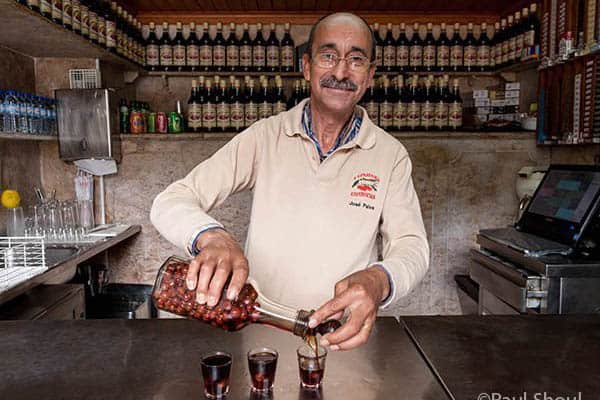Do Not Fear the Bullfighting: In Lisbon, the Bull Doesn’t Die
By Edward Yatscoff
Strolling around Lisbon during an early evening in March, my eye went to a unique structure across the wide Avenida de Republica. The grand Campo Pequeno is hard to miss with its Arabian palace look with towers or turrets like onion bulbs, almost Kremlin-style.
My wife and I were on our way to the Metro subway and made a note to return the next week. We were so glad we did. Huge posters of upcoming concerts hung from its exterior. This large building is a home for bullfighting, and we’d soon get to see how they work here.

On the way up and around the stairs to my cheap seat, a live band played ‘conquistador-style’ music and I really began to feel the buzz. What a venue. A dirt ring, steep-sided tiered seating, traditionally garbed bull fighting guys, and TV cameras. Sort of a rodeo minus the cowboys. Olés instead of yahoos and yee-haws we expected to be happening on as large crowds milled around. We ventured over to a woman pacing out front, handing out pamphlets, and I asked her what was going on.
“A bullfight. It is on now. You would like to go?”
We had never even heard of a Portuguese bullfight. “Uh…” I looked at the families, couples, groups of women and men heading in. A lively group, clearly energized.
She was probably used to people turned off by the stories of cruelty and the slaughter of the bull. I knew that was Spanish-style.
She was quick to point out the bull does not die.
“It is traditional Portuguese bullfighting. It is a special night,” she said.
The pamphlet had a picture of the bull on it. Uma Temporada Extraordinaria, an extraordinary season, stated the headline. From the dates printed on the inside, 12 Corridas, tonight was the season kick-off. The program noted cavaleiros, matadores, forcados, bandarilheiros– whatever. But I knew the word toiros, the bad old bulls.
I’ve always wanted to see a bullfight and figured I’d leave before the animal was slaughtered at the finale. My wife was game, so we took the greeter’s word that the bull would be okay, queued up, and bought a ticket.
Trumpeting a New Round
A trumpet player stood to announced a new round. To boisterous music, out cantered a green-attired horse with a matching rider, a cavaleiro, prancing and pirouetting a few times around the ring. Apparently, Spanish-style doesn’t have the mounted cavaleiros.
This horse bravely defied the bull, exposing its broadside to it. The bull’s horn tip are cut off to protect the horse. In the saddle, the cavaleiro taunts it with a hat. As the bull charged, the horse pranced sideways in front to avoid the horns, before digging in and scooting away forward. What a horse!
A few more times of this provoking, then the cavaleiro got serious. He stood in the stirrups and thrust brightly-colored, small javelins, into the animal’s thickly muscled back behind its shoulder.
The horse swung around, narrowly avoiding the charge. A resounding “Olé!” erupted. Blood began to trail down the animal’s side. Not a lot, though.
I struck up a conversation at the concession stand with a local man who said, “In Spain, the javelins cut the neck muscles of the bull so it cannot lift its head.” There’s a lot more bloodshed that way.
Taunting the Bull
After about six of these javelins stabbed into the bull, the horse and rider trot off. Then eight young guys, forcados, wearing fancy short jackets and pants enter the ring and taunt the tired animal.
One forcado incites it to charge while the others pull its tail and basically mob it. Once even muscling it to the ground. Later, with a fresh bull, these guys dared not pull its tail. Instead, they’d taunt it and run for the protection of wooden barriers. Not much different than rodeo clowns, but far better dressed.
After this bit of fun, a group of tame bulls are let into the ring, one wearing a big bell. Two bandarilheiros wearing traditional costumes and brandishing poles herded them to the gate, out of the ring. The bull, with the javelins still attached, meekly follows them off, looking somewhat confused, probably wondering why his pals didn’t help him out earlier.
Enter the matador. On foot. The beginning of the program sees inexperienced matadores try their hands. As the night wore on, more experienced matadores took to the ring. They are the show, the art, flamboyance.
Getting very close and personal is why the fans come out to see them; sweeping the red cloak up and away in grand style, moving barely a step to one side, as the bull brushes against them. Then insanity. They stand a few paces in front of the bull, incite it to charge, and when it does, plant two javelins into the bull–lightning-quick–and skedaddle away.
“He’s Going to Get It!”
I was sure one of those matadores was going to get it. I was right. One matador didn’t get out of the way fast enough and was trampled. Oops! The band punctuated that faux pas with a dramatic burst of horns and drums. That was exciting for fans but it has to be embarrassing.
Alright, I understand, a bit rusty, right? Out rushed the bandarilheiros and forcados to distract toiro. But the now dusty matador snapped to his feet like a cat and continued on like the aristocratic pro he is.
Things were about to get even more exciting. The bull charged past and lifted its neck and shoulders to follow the cloak upwards. The javelins rattled up hitting the matador in the face. Whoah!
A burst of music.
A huge “Olé!”
I was swept up in it and shouted along with them. Two bleeders in the ring, now. Just for a brief moment, I thought I saw the bull grinning.
At the end of each round the matadores and cavaleiros walk around the ring like champs, tip their hats to applause, and catch flowers and scarfs from the crowd. Interviews before the cameras followed.
Thoroughly Entertained
Before I knew it, two and half hours flew past. For 10 Euros a pop we were thoroughly entertained and like everyone there, glad to see the bull survived the corrida. When I hear about Friday night fights now, I think toiros.
Campo Pequeno is an orange brick venue, difficult to miss; a blend of Arabic architecture and a Spanish bull ring. Its name actually means ‘small field’. Centuries ago, Portugal was conquered by the Moors, so here and there, you can still find their influence. It took two years to build it in 1890, and a 2006 reno added a removable roof.
This year, 2016, was the tenth anniversary of the new refit. I was so dazzled by the bullfight, I didn’t even register a shopping center under it. However, my wife did. Back at the guest house I researched the building and discovered it can seat 10,000 and occasionally hosts concerts.
A Metro station below bears the same name. The skilled horses are Lusitanos, prized mounts specifically bred for this daring work and dressage events. The Matadores are from aristocratic families, bullfighting running in their veins. The best part of travel is stumbling upon something remarkable and unforgettable. Learning about it later is icing on the cake.

Edward Yatscoff is a retired fire rescue officer living in Alberta, has published eight novels, many short stories, and travel articles, and has visited 25 countries.
Eurail Passes: What to Know about Buying a Europe Train Pass
- Missouri Sports Travel Adventure: From Landmarks to Ballparks - January 21, 2026
- What First-Time Visitors Get Wrong About Visiting Iceland - January 15, 2026
- Bareboat Charter vs all-inclusive Crewed: Which Luxury Charter Fits You? - December 29, 2025








I don’t want to read any stories about animal abuse and torture. For the sake of backward traditions- there are lots of things we don’t do anymore- this should include barbaric torture in the name of fun. The horse is also being forced into unnatural behaviour that puts its own life at risk not the human!!! Likely extremely frightening for the horse to repeatedly do this in name of entertainment. I hate this post and way it portrays it as fun. You should have ethics in what you allow to be posted and animal abuse should be a priority. This is only way we can change society into a more humane world. Polls in country seem to show even most Spanish people don’t like it so why aren’t government doing something? Overturning a ban in Catalonia? Not good.
You make a good point, sorry, we have no plans for more stories about bullfighting.
A very worrying reflection of what in fact takes place during Bullfighting in Portugal. This article is a total distortion of the truth. The glamorization of this article leads a reader to think its all fun.
Its not, its brutal, its uncivilized and should be banned. Its not a true reflection of Portuguese culture, in fact it is nothing more than gory display of a misguided “manhood power”.
There’s nothing manly about fighting an animal that has been brought down to a depleted mental and physical status. Maybe, we should instead put these same “manly” chaps in the arena and let us give them the same treatment they give both the bulls as well as the horses …
You all always same the same things. Allow an opposing view: you’re west European white in origin. It’s always you doing these things: forcing, elbowing your way and your supremacist views into different, darker cultures and instructing them from some imaginary moral high ground “how they should be” to “make you feel better”. Well, that’s not their job, and you should focus on the brutality of human boxing and American football before coming at Iberian rituals that have endured for tens of centuries. The bottom floor FACT is animals, such as bulls, are not ignorant innocent children with big brutish muscular bodies, brown eyes and small brains and needing your “white woman’s burden” “rescue”. This is the exact same racist attitude your kind took across the world colonializing other, darker nations and their peoples in order to “rescue them” from themselves and their “strange, ignorant, dark and superstitions brutal rituals” and convert them to your own. Yet you fail to see this.
Specism is a thing, too, just like racism. Animals do not need “your” “rescue”. You’re affluent, privileged, bored and desirous of getting into trouble. You’ll soon get it. Spain and Portugal have no need of your silly anglo imperialism and Bwana/Mandingo fantasies, animals are not weak dumb children, and you’re being offensive.
Bullfighting is going nowhere and you people are only making yourselves less liked the world over. Just like you did when you brutalized “savage” Native Americans, Haitians and Indios out of their ancient rituals and turned their lands into shopping malls. Same prejudice, same level of presumption, same stupidity.
Be silent and rescue yourself.
And before you come at me claiming you are Portuguese, so am I. And I don’t think you are. Your level of arrogance smells distinctly England/Ireland emigre to the United States on the privileged Mayflower from here. Allow me to speak for the bull:
Stick it; just as the Cherokee, blacks and the Mexicans should have told you when you did the same thing to them!
Majority of Portuguese and Spanish people are just as savage as they were when they were expanding their territory and killing all the natives!
That’s what you call culture??? You should be ashamed of yourselves!
You are uncivilized and cruel monsters